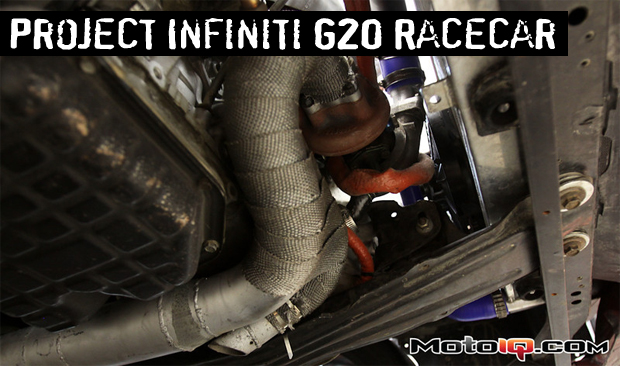,
Any NPT fittings were then smeared with Earl's Instant Pipe Sealant before installation. This sealant is designed specifically for NPT fittings, and will instantly seal pipes against leakage (there is a small cure time for pressure seals. Keep in mind that no sealant should be used on AN fittings.
 |
Earl's Instant Pipe Sealant is designed specifically for sealing Earl's NPT fittings. |
Since the turbine housing was extremely close to the routing of these lines, we wrapped all of our supply and return lines in Earl's Flame Guard insulation to ensure our lines did not fail due to excessive heat. Flame Guard is designed to operate at up to 500° F, and can tolerate temporary spikes of up to 2000° F. Again, we wanted to make sure Murphy and his stupid law had as little to do with our turbo project as possible.
 |
| Earl's Flame Guard is designed for operating temperatures of up to 500° F, and can tolerate temporary spikes of up to 2000° F. |
Before you go throwing lines at your car any which way they'll fit, keep in mind that some planning needs to go into routing your supply and return lines. After reading Garrett's whitepaper on water cooled turbos, we realized that running the lines was more than making sure they weren't rubbing on things, resting on the turbine housing, and long enough. To ensure proper cooling and oil drainage, the turbo's center section should put the water fittings at approximately 20° from horizontal.
 |
The input water should be plumbed into the lower of the two ports, and the return side plumbed into the higher port. The real trick is that the coolant return must travel “uphill” all the way back to the cooling system, with no up/down kinks that can trap coolant or air bubbles. This allows the coolant to continue to siphon through the turbo after the engine has been shut off through convection.
The next step in our turbo conversion involved removing the water recirculation pipe on the back of the cylinder head. The recirculation pipe connects to a coolant port on the back of the cylinder head near the oil filter that Nissan added in order to allow water to flow through the pump when the thermostat was closed.
This pipe allows important things on a daily driven car to work like your heater, your throttle body in freezing temperatures, and also helps your engine to warm up faster to improve emissions. These are all things we were completely unconcerned about, but until now, we had just looped the ports we weren't using and left it be. However, with our new setup, we were seriously concerned about this coolant recirculation pipe's major problem: it recirculates coolant. This is a problem because this recirculation pipe doesn't stop working after the thermostat opens. What this means is that a fairly large amount of hot coolant leaves the head and goes right back into the pump and is fed right back into the engine. This is normally not a problem on a normally aspirated SR20 in racing conditions, but with the added thermal load of turbocharging, we decided this pipe had overstayed its welcome.
 |
| Circled in red is the offending hard pipe to be removed. Circled in blue is the port on the back of the head. Not pictured is the second hard pipe which houses the ECU's coolant temp sender and the idiot gauge's temp sender. |


